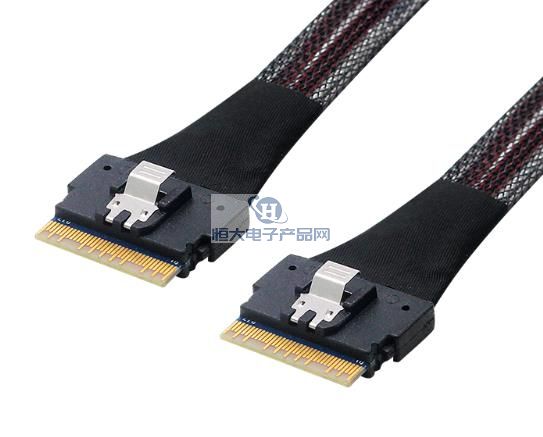Categorization:Product Information
A PCI-E cable (Peripheral Component Interconnect Express cable) is a high-speed data transfer cable used to connect internal computer components. It is a point-to-point serial communication interface used to connect the PCI-E slot on the motherboard to other devices, such as graphics cards, expansion cards, storage devices, etc. The manufacturing process of PCI-E cables consists of the following major steps: Raw material preparation: The main raw materials for PCI-E cables are copper wires and insulating materials. Copper wires are used to transmit electrical signals, while insulating materials are used to protect the copper wires and prevent interference with electrical signals. Wire Stranding: Copper wires go through a series of processes including wire drawing, copper stranding and braiding to form the core. This step is designed to provide better signal transmission performance and electromagnetic shielding. Insulation Manufacturing: Insulating materials are extruded or clad to form an insulating layer that encases the copper wire. The insulating material is usually polyolefin or polyvinyl chloride (PVC), which has good electrical insulation properties and mechanical strength. Shield Manufacturing: In order to provide better interference immunity, PCI-E cables usually also contain a shield. The shield is usually made of aluminum or copper foil and covers the outside of the insulating layer. The shield effectively blocks external electromagnetic interference from affecting the signal. Manufacturing of the outer jacket: The outer jacket is the outermost layer of a PCI-E cable and is used to protect the core and other layers. The outer jacket is usually made of materials with good abrasion, pressure, and flame retardant properties, such as polyvinyl chloride (PVC) or polyurethane. Cable Assembly: When manufacturing PCI-E cables, the core, insulation, shield and outer jacket need to be assembled together in a certain order. This is usually done with mechanical assembly equipment to ensure that the connections between the layers are tight and strong. Testing and Quality Control: Manufactured PCI-E cables are subjected to rigorous testing and quality control to ensure that they meet the relevant electrical specifications and performance standards. Tests can include resistance tests, voltage withstand tests, transmission rate tests, and more. Packaging and Shipping: The finished manufactured PCI-E cables are sorted and packaged through packaging and labeling and are ready to be shipped out of the factory. Packaging is usually done using plastic reels or spools to facilitate storage, transportation, and distribution. To summarize, the manufacturing process for PCI-E cables involves copper stranding, insulation manufacturing, shield manufacturing, outer jacket manufacturing, wire assembly, testing and quality control, and finally packaging and shipping. These steps ensure the high-speed signal transmission, EMI resistance and stability performance of PCI-E cables, making them an indispensable part of modern computer systems.

-About Evergrande Electronic Products Network platform related to the introduction and sales of products briefly: Evergrande Electronic Products Network - a professional agent / production / sales of a variety of {connectors | wiring harness | wire and cable products }; if you have a related [connectors | wiring harness | wire and cable products] procurement / purchasing needs or would like to buy / to understand which connectors | wiring harness | wire and cable products we can provide solutions, please contact the following Division I business personnel; if you have a related [connectors | wiring harness | wire and cable products] sales / resources and promotion needs, please click on the "¡¡ business cooperation ← with the person to discuss! If you have related [connectors | wire harness | wire and cable products] sales / resources and promotion needs, please click on the "¡¡ Business Cooperation ←" to discuss with a person!